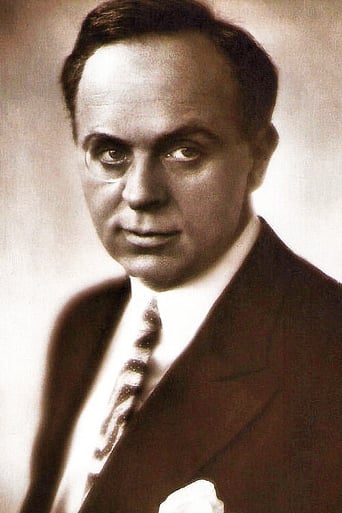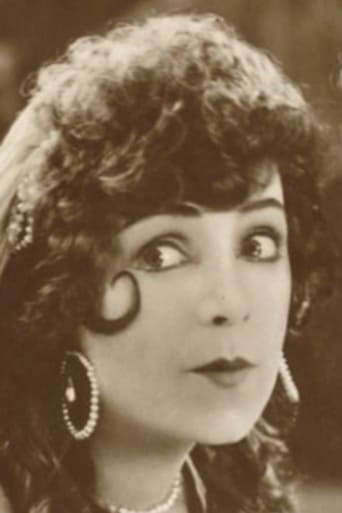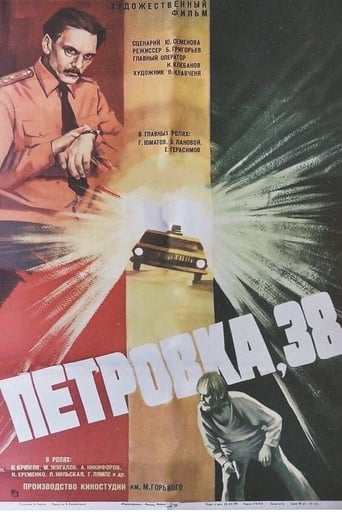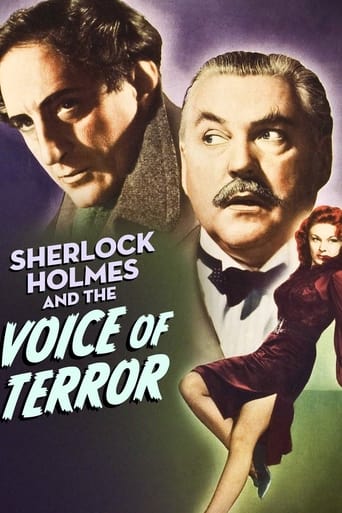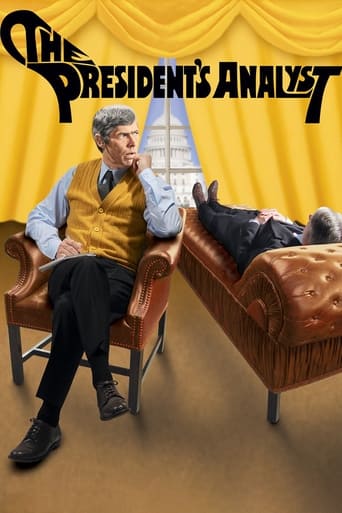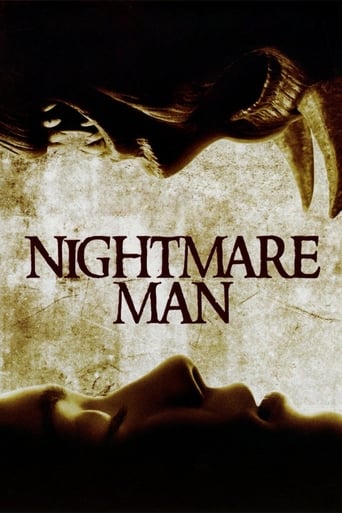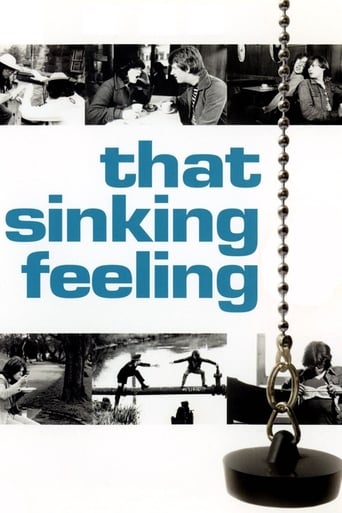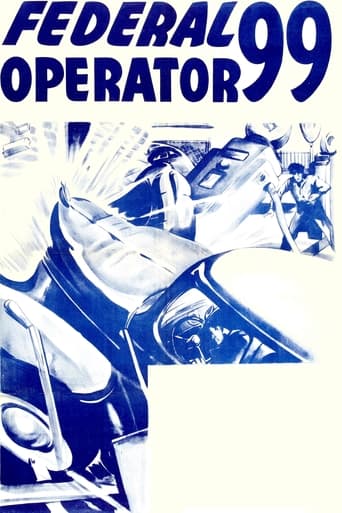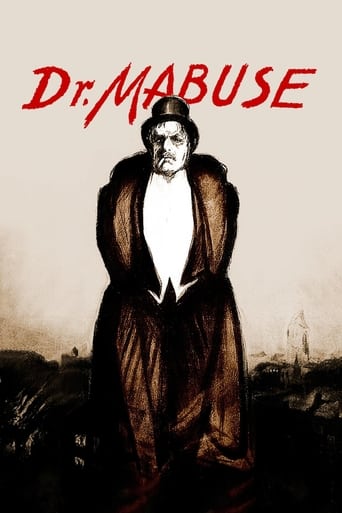
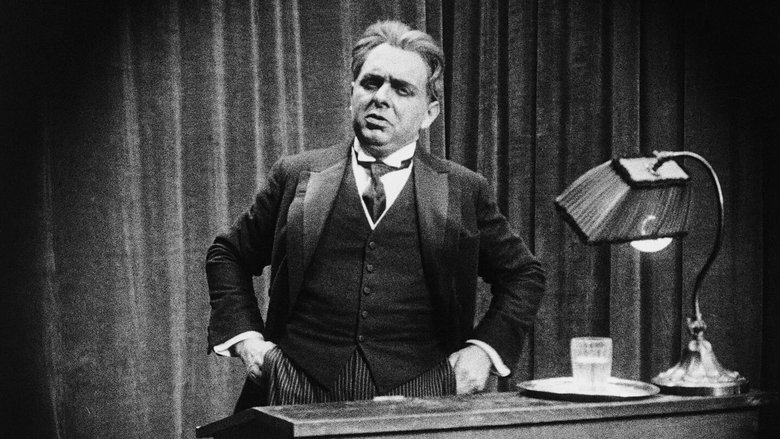
Dr. Mabuse, the Gambler (1922)
Dr. Mabuse and his organization of criminals are in the process of completing their latest scheme, a theft of information that will allow Mabuse to make huge profits on the stock exchange. Afterwards, Mabuse disguises himself and attends the Folies Bergères show, where Cara Carozza, the main attraction of the show, passes him information on Mabuse's next intended victim, the young millionaire Edgar Hull. Mabuse then uses psychic manipulation to lure Hull into a card game where he loses heavily. When Police Commissioner von Wenk begins an investigation of this mysterious crime spree, he has little to go on, and he needs to find someone who can help him.
Watch Trailer
Cast
Similar titles
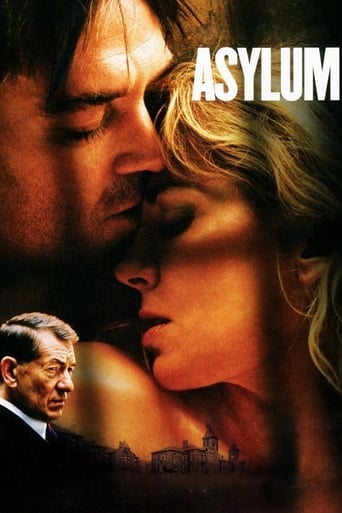
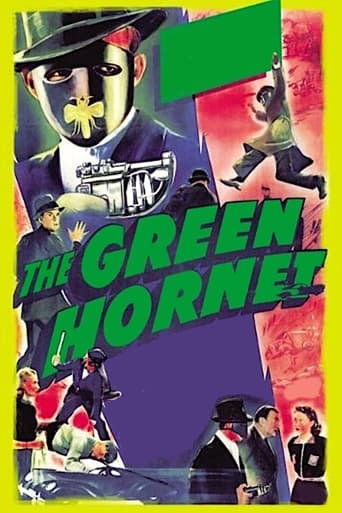
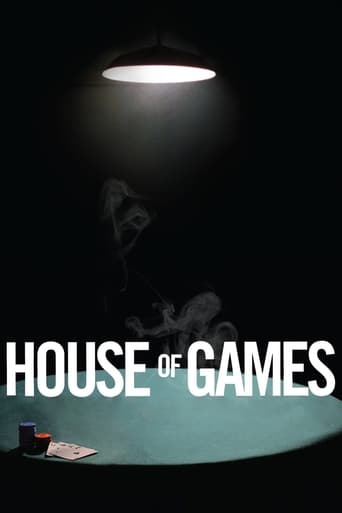
Reviews
Better Late Then Never
A terrific literary drama and character piece that shows how the process of creating art can be seen differently by those doing it and those looking at it from the outside.
Like the great film, it's made with a great deal of visible affection both in front of and behind the camera.
I enjoyed watching this film and would recommend other to give it a try , (as I am) but this movie, although enjoyable to watch due to the better than average acting fails to add anything new to its storyline that is all too familiar to these types of movies.
At its longest running time, "Dr. Mabuse: The Gambler" is almost five hours long, and it really overstays its welcome. Long movies should be epics, spanning many years, accompanied by stirring music. This movie is just a crime drama taking place over a matter of weeks, perhaps months. It might have been more palatable had it been presented today as a television series, divided into weekly segments of forty minutes each, allowing for commercials, but just barely.When the movie begins, our credulity is strained by the elaborate conspiratorial network that has been set up to do what could have been done in a simple, straightforward manner. For example, when Dr. Mabuse, the mastermind of a criminal organization, wants to meet secretly with one of his henchmen, does he just have the guy come over to his apartment where they can talk in private? It would seem reasonable enough, inasmuch as Mabuse's henchmen can often be found at his apartment where he gives them instructions. But no! Mabuse puts on a disguise and pretends to have an automobile accident with his henchman, who then offers his car to Dr. Mabuse, as if he is just giving him a lift out of courtesy. Inside the car, Mabuse then gives his henchman the secret instructions. And how did they arrange to have this accident at just that time and at just that intersection, you ask? Why, they probably discussed it over at Mabuse's apartment the day before.The point of the secret meeting in the automobile has to do with the creation of a panic in the stock market concerning a stolen trading agreement between nations, allowing Mabuse, in disguise, of course, to sell high and then buy back low when the trading agreement is found, still sealed, just as Mabuse planned. That might have been interesting, had not the whole thing been rendered silly by the automobile accident nonsense.Before going over to the stock exchange, Mabuse, in another disguise, goes over to a secret apartment where he has a counterfeiting operation going on. Does he keep the key in his apartment until he needs it? Of course not. He has a woman sit outside the apartment with the key hidden in a ball of twine, which he extracts when he wants to go inside. Once in the apartment, we find five blind men counting the counterfeit money and putting it in bundles. They are never allowed to leave the place, and since they are blind, they don't know who it is that runs the operation. We never see the money being printed, just counted. Perhaps it is being printed in another room by five deaf men who cannot hear Mabuse's voice and thus do not know who runs the operation.You might think that between these market manipulations and counterfeiting operations, Mabuse has all the money he needs, but as we later find out, money is not Mabuse's ultimate motive. He does not want money so that he can live in comfort and luxury. In fact, he cares nothing about happiness, and indeed, his moods range from morose to grouchy to angry. What he wants is power, of which he can never get enough. Money is simply one manifestation of his power. Another is his ability to manipulate people. Finally, toward the end, he says he regards himself as a state within a state, with which he is at war.Regarding his desire to manipulate people, we discover a new aspect of the movie that makes the counterfeiting and stock market machinations almost seem realistic by comparison. It turns out that he has mesmeric powers so great that he can compel people to do things from across the room simply by concentrating his gaze. Such are his powers that he compels several people to commit or attempt suicide. Also, his mental powers enable him to create illusions. In one case, in a different disguise, he puts on a performance displaying such skills, which includes making the entire audience see people emerge from a desert and enter into the aisle, only to vanish before their eyes. I found myself saying, "Mabuse gestures hypnotically," in allusion to "Mandrake, the Magician," a comic strip I never cared for.At one point in the movie, another motive arises for Mabuse, lust for Countess Told. He kidnaps her and takes her to his apartment, but she keeps refusing his advances, saying she wants to return to her husband. As an act of revenge, Mabuse compels her husband, Count Told, to slit his throat with a razor. Why Mabuse didn't just use his mesmeric powers to make the Countess get naked and hop in bed, I don't know. Prosecutor von Wenk finally figures out that Mabuse is the evil super villain behind all the bad things that have been happening. He gets an armed force together to arrest him, leading to a big shootout. But it doesn't make sense that Mabuse would resist being arrested, because he could mesmerically compel the judge and jury to find him innocent, or, in a pinch, compel the guard to open the prison doors and let him go. And then he could gesture hypnotically to make it appear that that he was still in his cell.I guess the people who made this movie realized that Mabuse's powers could exceed any brought against him by the state, so they stooped to a deus ex machina. They made Mabuse go mad, seeing ghosts of those whose deaths he was responsible for. Reduced to a blithering loony, he is carted off to jail, or, as we find out in the sequel, to an insane asylum.
It is interesting to discover or rediscover Fritz Lang. He was well known for one film, Metropolis, and then for a few American films, films he shot in the USA. But the full set of Dr Mabuse's films is fascinating in a way because it provides a rare vision on the German cinema from the early 1920s to 1960. The eye looking at the world from a German point of view that spans over Hitler, Nazism and the Second World War is Fritz Lang's. We know him for his highly symbolical Metropolis in which the meaning is built by visual and numerical symbols. In this Dr Mabuse it is different. There are quite a lot of symbols but inherited from the silent cinema of the old days, symbols that are there only to make clear a situation that had been depicted previously with pictures and no words, or a page of intertitles. Fritz Lang still uses that technique in his 1960 film, which is a long time overdue for a silent cinema technique. But that is a style, nothing but a way of speaking, not a meaning. The meaning is absolutely bizarre. Dr Mabuse is a highly criminal person but his objective is not to commit crimes in order to get richer or whatever. It is to control the world through his criminal activity. The world is seen as basically negative, leading to chaos and overexploitation, leading to anarchistic crime and nothing else because the only objective of this modern world is to make a profit by all means available. Dr Mabuse is a master mind of his time and for him crime is the only way to destroy that capitalistic world that he never calls capitalistic or Kapitalismus and to replace it with pure chaos that should be able to bring a regeneration, a rejuvenating epiphany, a re-founding experience. We find in his mind what we could find in some of the most important criminal minds in this world, like Carlos in France, or Charles Manson in the USA, or those sects that practice mass suicide in order to liberate the suicidees and to warn the world about the coming apocalypse. It is the mind and thinking of those who practice war as a revolutionary activity with a fundamentalist vision of their religions or politics and the world that is supposed to reflect that religion. They do not want to build a different society and when they are in power they are constantly aiming at antagonizing their own population and the world because they cannot exist if they do not feel some opposition that they can negate, bring down, crush, like in Iran, or in Germany with Hitler, though later on it was not much different under the Communists in East Germany. These visions need opposition to exist and they provoke that opposition by aiming at taking the control of the world with violence and imposing their control with more violence. That's Dr Mabuse, the main brain of a criminal decomposition and re-composition of society on an absolutely antagonistic vision of life. But that vision is very common. Just as common as this phrase "a half full glass is nothing but a half empty glass". Add antagonism to that dual vision and then you have a struggle to the death between the half empty glass that wants to be full and the half full glass that wants to be empty (or full?), one half only wanting to take what the other half has and impose his half to the other half to make the world one by the elimination of the other side of the coin. That dual antagonistic vision is the popular and shrivelled up approach of the communist catechism of Stalin, inherited from Marx's French son in law Paul Lafargue, or of course in all dictatorship that reduces life to a little red book, to one hundred quotations from the master thinker of the revolution. That's the world you feel in these films. Fritz Lang embodies this ideology of the mentally poor in that criminal character of his: kill, rob, steal, counterfeit. Even if you die when doing so, the world will change and remember. The master criminal has to die in his activity in order to regenerate the world. What Fritz Lang introduced in his double main feature of the early 1920s and in his Testament, is that the master brain of this vision internalizes this paranoid and psychotic vision of the world into himself and has to become psychotic himself and it is in his psychosis that he finds the energy to conquer the world again. In the third film, Dr Mabuse has been dead for a long time and is reincarnated by someone who finds his inspiration in the doctor. That is a far-fetched cinematographic and fictional antic that is necessary as a reference but brings nothing to the vision itself. A few years later that ideology was to conquer our imagination in many ways. First the Berlin Wall became the symbol of that vision the way it was carried and conveyed to the world by the East-German communists. Then we have to think of the various revolutionary movements like Der Baader Meinhof Komplex, Die Rote Armee Fraktion, to take some German examples. But think of the French Mesrine and the Italian revolutionary urban guerrilla warfare movements and you will have a fair picture of this psychotic criminal mind copied and pasted into the political field. The Maoist Red Guard and Cultural Revolution movement was quite typical of this approach. All that was going to come in 1960 and we must admit Fritz Lang was seeing ahead of his time, just as he had seen Hitler in his Testament of Dr Mabuse: a political leader based on hypnosis and mesmerizing people into blindly following a band of criminals.Dr Jacques COULARDEAU, University Paris 1 Pantheon Sorbonne, University Paris 8 Saint Denis, University Paris 12 Créteil, CEGID
This film, like many of Fritz Lang's best efforts, mixes pulp fiction, realism, fantasy and social comment, in this case to adapt to the screen Jacques Norbert's serial novel about a diabolical mastermind (Rudolf Klein-Rogge) who can destabilize the national economy by manipulation of the stock market, operate an underground counterfeiting ring manned by blind slaves, hypnotize card players into losing all of their money to him and even engineer a mass hallucination. He changes his identity for every caper via costumes, wigs, prosthetics and fake facial hair. He has in his employ an army of henchmen from slum denizens and cutthroats to a celebrated follies dancer whom he uses as a lure for wealthy victims. And for what? His purpose in life is to "play the game" and undermine his opponent's will. At one point he states that there is no such thing as love, only lust and the will to power (or, as some interpretations go, the will to possess what one desires). When state prosecutor Von Wenk (the sturdy Bernhard Goetzke) launches an investigation into this one-man crime wave his pursuit covers the social spectrum from the dives and gutters of the underworld to the palaces of the nobility.The film is beautifully designed and photographed and organized into scenes and acts. Each scene is a story unto itself. This structuring helps provide a centering or equilibrium for the viewer amidst the cascade of events and characters.Among Mabuse's victims: A bored countess (Gertrud Welcker) who frequents the illegal gambling houses to observe the reactions to wins and losses on the faces of the players so that she can vicariously experience passion. She longs for an adventure the likes of which she can never experience at home with her wimpy husband who spends his time tinkering with antique art objects. Little does she know that she is about to be plunged into the adventure of her life.Another young beauty, this one a prominent cabaret performer (Aud Egede Nissen), has fallen under the spell of Dr. Mabuse, lives in an apartment adjacent to his hotel suite and serves as bait for unsuspecting victims like the wealthy young Edgar Hull (the not-so-young Paul Richter), who is milked of his fortune by Mabuse.No one can defy Mabuse. He seems to be everywhere and know everything, so that if you dare betray him you are as good as dead. This terror ensures his gang's devotion. The similarities to Hitler (or any totalitarian leader with secret police tentacles reaching far and wide) are obvious and this film has been cited often as a foreshadowing of the Hitler era. Part 2 is even subtitled "a story for our time." The notion of conspiratorial forces operating behind the scenes was on the German mind when this film was made.There are many startling parallels between MABUSE and the 1920 classic THE CABINET OF DR. CALIGARI, an interesting fact considering the legend that Lang was involved in the conceptual stage of CALIGARI. Both stories feature a spooky doctor with hypnotic powers who spreads evil through the land. In both films the identity of the central evil character changes: Dr. Mabuse assumes many disguises; Dr. Caligari remains himself until he appears as a psychiatrist at the end. The sign on Mabuse's door reads "Psychoanalyse." Caligari's somnambulist predicts a man will die within hours; Mabuse hypnotizes a man into driving himself over the bank of a canal. The villains even visually resemble each other in both films: Mabuse often wears white fright wigs and high hats reminiscent of Werner Krauss's look in Caligari. MABUSE operates on a wider canvas than CALIGARI. Whereas Caligari's only instrument is his somnambulist slave, Mabuse operates an extensive network of henchmen. At the climax of both stories a word ("Caligari"/"Melior") is animatedly superimposed over the screen action to intensify the impact. The whole of CALIGARI is designed expressionistically; expressionistic sets are used minimally and subtly in Mabuse but the subject of expressionism is briefly discussed in one scene wherein Mabuse describes it as "another game" or words to that effect. The expressionism in CALIGARI is all-encompassing; in MABUSE it is under control, part of a larger design. In both films there are scenes in prison cells. In both films a beautiful young woman who has fainted is carried off and then liberated. In the Kino edition of MABUSE there is one apparent technical glitch: a car chase near the end starts at night and suddenly flips to daylight with no sense of transition. If this was Lang's idea of "day for night" shooting, he overshot the mark hugely.On display here is Lang's penchant for mixing exotic pulp, unadorned realism, and pure fantasy. In MABUSE it is the doctor's magical hypnotic powers that stretch and finally break credulity, woven as they are into an otherwise naturalistic crime melodrama. This mixture of the fantastical and the ordinary occurs in all of Lang's 1920's work, right through WOMAN IN THE MOON (1929). Only with M (1931) does he begin to abandon fantasy and concentrate on social issues, whereupon he steered clear of pulp and exotica until late in life when he returned to the genre in the late 1950s with his India trilogy. But by that time film audiences had long outgrown the conventions of the 1920's. And so ended Lang's career. But the sheer scope and expert execution of this film under the conditions that prevailed in Germany in 1921-22, supervised by a man barely 30 years old, is quite an achievement and should be seen.
Fritz Lang's first masterpiece, a four & a half hour double-feature with hardly a moment wasted, has been restored to stunning effect. (WARNING: In the KINO DVD edition, you MUST lower the contrast & brightness levels to reveal the full grey scale.) On one level, this is simply a far-fetched, but smashingly entertaining detective drama about Mabuse, a criminal mastermind who shows up in more disguises than Alec Guinness in KIND HEARTS & CORONETS to counterfeit, manipulate the stock exchange, kill personal rivals, run the drug racket and generally lord it over the pursuing police force of the modern city. If Part One offers a more devastating look at the perilous world that was Weimar Germany, there's still plenty of action & schemes left for Part Two. In MABUSE, Lang manages, more than he would in METROPOLIS, to hold all the expressionist elements (design, acting, story construction) in perfect balance. The dynamism for an early '20s pic, (before the era of easy camera movement) is simply phenomenal. And where else will you find an inter-title as glorious as: 'Eat some cocaine, you weakling!'
